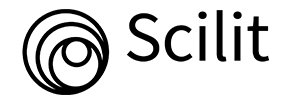
Journal Basic Info
- Impact Factor: 1.989**
- H-Index: 6
- ISSN: 2637-4625
- DOI: 10.25107/2637-4625
Major Scope
- Cardiovascular Surgery
- Orthopaedic Surgery
- Hand Surgery
- Vascular Surgery
- Surgery & Surgical Research
- Surgical Procedures
- Endocrine Surgery
- Plastic Surgery
Abstract
Citation: World J Surg Surg Res. 2021;4(1):1328.DOI: 10.25107/2637-4625.1328
The Surgical Management of Retrosternal Goiter; an Ongoing Controversy
Cullinane C*, Evoy D, McDermott E and Prichard R
Department of General, Breast and Endocrine Surgery, St Vincent’s University Hospital, Dublin, Ireland
*Correspondance to: Carolyn Cullinane
PDF Full Text Review Article | Open Access
Abstract:
The natural course of retrosternal goiters tend to be slow growing and most commonly present
in patients in their fifth decade. There is a female preponderance in cases of RSG with a ratio of
3:1 and have a familial component in up to 30% of cases. Many different definitions of RSG exist
in the literature, rendering it difficult to compare series and draw conclusions. Unquestionably,
surgery is the optimal therapeutic option for surgically fit patients with compressive symptoms
secondary to RSG. However, the role of thyroidectomy in the setting of asymptomatic RSG is less
clear. Cervical goiters, in the absence of compressive symptoms or suspicion of malignancy, are
managed expectantly. It seems plausible that a similar approach could be adopted for RSG especially
as the natural course of RSG is slow and indolent. Several CT based classification systems have been
devised to predict the need for sternotomy in surgery for retrosternal goiter. These classification
systems are useful adjuncts when deciding the appropriate surgical approach and setting for RSG
as high-risk cases should be consulted with thoracic surgery and performed in a setting where such
services are available.
Keywords:
Cite the Article:
Cullinane C, Evoy D, McDermott E, Prichard R. The Surgical Management of Retrosternal Goiter; an Ongoing Controversy. World J Surg Surgical Res. 2021; 4: 1328..













